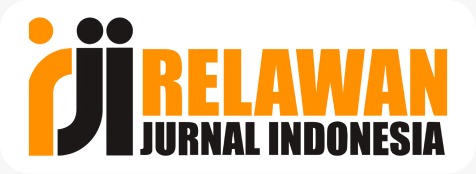| ADDITIONAL MENU |
| Editorial Team |
| Reviewer |
| Focus and Scope |
| Publication Ethics |
| Author Guidelines |
| Author Fees |
| Contact |
Author Guidelines
Overview
As part of the submission process, the author is required to check the conditions of submission with all items set by the Jurnal Basement: Jurnal Teknik Sipil. Articles can be rejected if they do not meet the guidelines for writing the Jurnal Basement: Jurnal Teknik Sipil.
- Articles to be submitted in the Jurnal Basement: Jurnal Teknik Sipil: (a) DO NOT contain elements of plagiarism, (b) have NOT been published, including not being in-press status, and (c) NOT being registered in another journal.
- Articles must be written in accordance with the format (style of the environment) determined by the journal Basement. If the minimum requirements are not met, it can cause the manuscript to be rejected.
- The submitted paper is the result of research within the scope of Jurnal Basement: Jurnal Teknik Sipil covers all new theoretical and experimental findings in the fields of Structural Engineering, Water Resources Engineering, Transportation Engineering, Geotechnical Engineering, Construction Engineering & Management and other civil engineering scope.
- Each table, graph and histogram with the optimum size must have a number and a name (written below the border). The lines and letters that explain it are printed thick enough so that the scale changes in editing can still be read clearly.
- Formulas are written with generally accepted notation in their respective fields and each formula must be numbered which is placed behind it on the right side of the page. It is recommended that formulas use italicized letters/notations to distinguish them from text.
- All foreign terms or words that are not translated, for reasons of ease of understanding, must be written in italics.
- After review by expert editors, manuscripts that require revision or are rejected will be sent back to the author.
- The length of the manuscript consists of 7 to 12 pages including the title, author's identity, abstract, table, picture, and reference.
- Manuscripts typed on A4 paper (21 cm x 29.7 cm), with mirror margin top 30 mm, bottom 25 mm cm, left (inside) 25 mm and right (outside) 20 mm.
- Contents of papers written by Times New Roman font size 10 pt with a distance of 1 space, and typed using MS Word, the number of pages is not more than 12 pages
- Citation/quotation/referral refers to the APA (American Psychological Association) standard.
- The manuscript is written in Indonesian or English, saved in the MS Word compatibility mode file format with Microsoft Word 97-2003 format.
- Other provisions, can be seen in the Jurnal Basement: Jurnal Teknik Sipil template (see template).
Original Research Article Full Structure
Title: The title should be short, clear, and informative but does not exceed 20 words. It has to be pinpointed with the issues discussed. The article title does not contain any uncommon abbreviations. The main ideas should be written first and followed by explanations.
Abstract: This abstract section should be typed in Italic font and font size of 10 pt (italic) and number of words of 150-200. Special for the abstract section, please use single spacing should be used between lines in this article. The abstract should be typed in Indonesian and English. The abstract should be typed as concise as possible and should be composed of: problem statement, purpose, method, scientific finding results, and short conclusion. The abstract should only be typed in one paragraph and one-column format.
Introduction: The introduction must contain your argument for the social and scientific value of the study, as well as the aim and objectives
Methods: This must address the following:
- Study design: An outline of the type of study design.
- Setting: A description of the setting for the study; for example, the type of community from which the participants came or the nature of the health system and services in which the study is conducted.
- Study population and sampling strategy: Describe the study population and any inclusion or exclusion criteria. Describe the intended sample size and your sample size calculation or justification. Describe the sampling strategy used. Describe in practical terms how this was implemented.
- Intervention (if appropriate): If there were intervention and comparison groups, describe the intervention in detail and what happened to the comparison groups.
- Data collection: Define the data collection tools that were used and their validity. Describe in practical terms how data were collected and any key issues involved, e.g., language barriers.
- Data analysis: Describe how data were captured, checked and cleaned. Describe the analysis process, for example, the statistical tests used orsteps followed in qualitative data analysis.
- Ethical considerations: Approval must have been obtained for all studies from the author's institution or other relevant ethics committee and the institution’s name and permit numbers should be stated here.
Results: The results obtained from the research have to be supported by sufficient data. The research results and the discovery must be the answers or the research hypothesis stated previously in the introduction part.
Discussion: The discussion section should address the following four elements:
- Key findings: Summarise the key findings without reiterating details of the results.
- Discussion of key findings: Explain how the key findings relate to previous research or to existing knowledge, practice or policy.
- Strengths and limitations: Describe the strengths and limitations of your methods and what the reader should take into account when interpreting your results.
- Implications or recommendations: State the implications of your study or recommendations for future research (questions that remain unanswered), policy or practice. Make sure that the recommendations flow directly from your findings.
Conclusion: The conclusion should answer the objectives of the research and research discoveries. The concluding remark should not contain only the repetition of the results and discussions or abstract. You should also suggest future research and point out those that are underway.
Acknowledgements: In this section, you can acknowledge any support given, which is not covered by the author's contribution or funding sections. This may include administrative and technical support, or donations in kind (e.g., materials used for experiments).
References: The literature listed in the References contains only the sources referenced or included in the article. We recommend preparing the references with a bibliography software package, such as Mendeley, EndNote, Reference Manager or Zotero to avoid typing mistakes and duplicated references. Referral sources should provide 80% of journal articles, proceedings, or research results from the last five years. Writing techniques bibliography, using the system cites APA (American Psychological Association) Style and the 10th edition.







